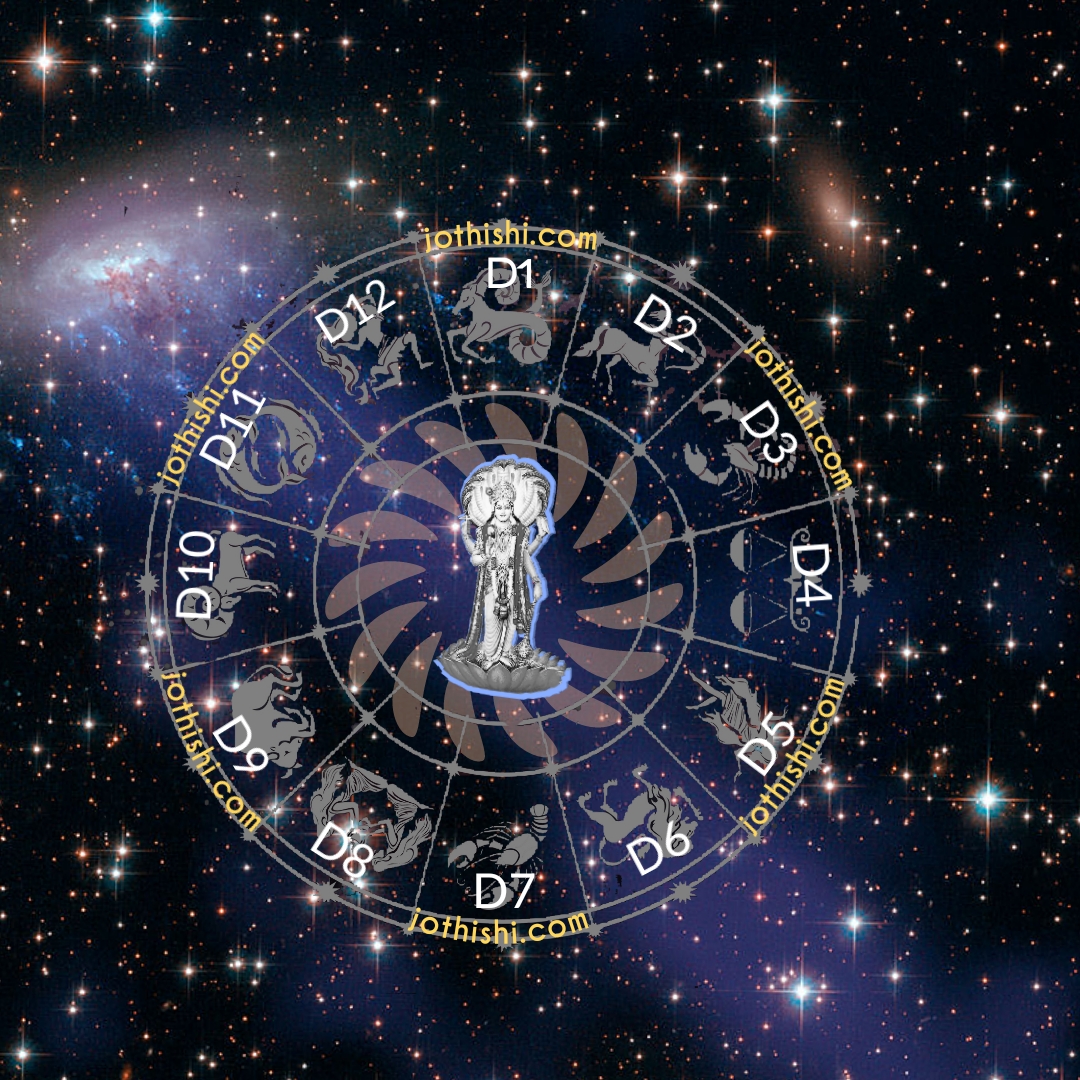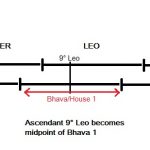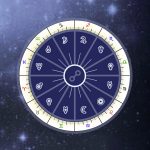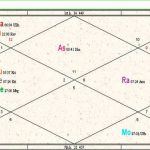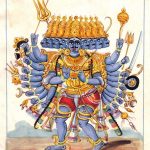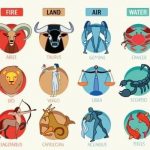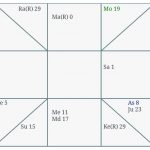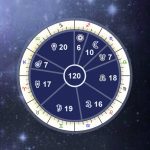Divisional Charts/ Harmonic Charts/ Varga charts and their significance
Divisional charts (D-n) or Harmonic charts are charted by division of Rasis or Zodiacal signs by respective fractions known as Amsas and arranged in a particular sequence to chart the respective Varga Chart.
There are sixteen Varga or Divisional charts primarily used in Vedic Astrology. Usage of Divisional charts of higher order till about D60 (known as Shashtiamsha) is in prevalence.
Each divisional chart signifies a specific area in life and the Environment as detailed in the table. Rasi, Navamsa and the Dashamsa are the most prevalent charts used in the analysis of the Native and Predictions.
What is Divisional Charts?
Divisional charts are useful to identify the planet’s strength and weakness and it plays an important role in horoscope prediction. Some of the most important and unique tools of Vedic astrology are the divisional charts, which are also known as Varga charts. These are special charts that are derived from the main birth chart or the D-1 chart, by dividing each sign of the zodiac into smaller segments. Each segment has a specific meaning and significance, and corresponds to a particular area of life. By studying the divisional charts, one can gain more insight into the true nature and strength of the planets, as well as their effects on different areas of life such as marriage, career, wealth, health, etc
Divisional Chart Snapshot
| Divisional Chart | Symbol | Area of life Indicated |
| Rasi | D-1 | Physical Existence |
| Hora | D-2 | Wealth, Resources and Money |
| Drekkana | D-3 | Environment related to Brothers and Sisters |
| Chaturthamsa | D-4 | Residence, Houses, Properties and Fortune |
| Panchamsa | D-5 | Fame, Authority and Power |
| Shashthamsa | D-6 | Health |
| Saptamsa | D-7 | Environment related to children |
| Ashtamsa | D-8 | Legal Issues, Sudden and Unexpected troubles |
| Navamsa | D-9 | Marriage, Spouse, Dharma, Skills |
| Dasamsa | D-10 | Career, Karma and Achievements |
| Rudramsa | D-11 | Death and Destruction |
| Dwadasamsa | D-12 | Environment related to parents |
| Shodasamsa | D-16 | Vehicle Related Pleasures |
| Vimsamsa | D-20 | Religious and spiritual matters |
| Chaturvimsamsa | D-24 | Learning, Knowledge and Education |
| Nakshatramsa | D-27 | Strengths and Weaknesses and inherent nature |
| Trimsamsa | D-30 | Evils and punishment, sub-conscious self, Diseases |
| Khavedamsa | D-40 | Auspicious and Inauspicious events |
| Akshavedamsa | D-45 | General Issues |
| Shashtyamsa | D-60/H-60 | Balance sheet of past lives |
Why Are Divisional Charts Important?
The divisional charts are important because they provide a deeper and more detailed analysis of the horoscope than the birth chart alone. The birth chart shows the general potential and tendencies of a person, while the divisional charts show how that potential is manifested in different areas of life. The divisional charts also show the hidden strength or weakness of a planet, which may not be apparent from the birth chart. For example, a planet may be well placed in the birth chart, but weak or afflicted in the divisional charts, which will reduce its positive effects. Conversely, a planet may be poorly placed in the birth chart, but strong or exalted in the divisional charts, which will enhance its positive effects. The divisional charts are thus an essential tool for Vedic astrologers to make accurate and precise predictions. They help to reveal the hidden aspects of a person’s destiny and karma, as well as their strengths and weaknesses. By studying the divisional charts, one can gain more clarity and wisdom about their life purpose and path.
It is important to understand influences and indications for the Rasi chart of the native and then re-confirm the same with Divisional Chart references.
Examples of Divisional Chart/ Harmonic Chart Usage:
Example 1: If a couple want to know when they will be blessed with a child and if the Rasi chart indicates “Child Birth” then a re-confirmation can be done by:
- Looking at the Saptamsa Chart which clearly
indicates the environment related to Children and Child Birth etc.
- A re-confirmation or Negation of the indication from Rasi chart can be done with the review in D-7 chart.
- This needs to be done along with various other inferences like Transits, Yearly influences, Yogas, Influences of negative planets, Sahamam’ s etc.
Example 2: If a native wants to understand his date and time for marriage and if the Rasi chart indicates Marriage in that particular year:
- Then a reconfirmation on the same can be done by looking at the D-9 or the Navamsa chart.
- Concepts like Upapadha Lagna, Arudha and Aspects can give a confirmation on the approximate timing for the marriage.
Example 3:If a Native wants to understand if and when he will get a promotion:
- Need to check the Rasi chart if there are
favorable connects and aspects related to the Lagna Lord, Lagna, Tenth Lord and
Tenth house and between Hora Lagna, Arudha Lagna, Rasi and Graha Arudhas etc.
- Validate these indications in the Rasi chart with appropriate and similar measures in the Dasamsa chart
- Reconfirm these Dasamsa indications with other indications like Transits, Raja Yogas, Sahamam etc
- Divisional charts can be representative in four different planes and they operate in:
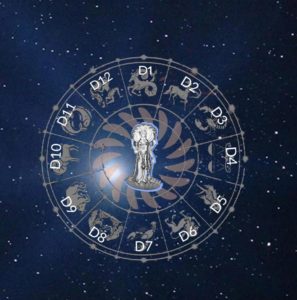
- Physical Plane – Divisional charts 1 to 12 – Indicating matters relating to Body, Wife, Children, Wealth, Properties, Parents, and Work etc.
- Mental Plane – Divisional charts 13 to 24 – Indicating matters relating to Happiness, Knowledge, Religion, Learning etc.
- Sub Conscious Plane – Divisional charts 25 o 36 – Indicating matters relating to mental issues, Evil’s associated, Strengths, Weaknesses etc.
- Karmic Plane – Divisional charts upto 60 – Indicating influences from a karmic level – like Past life influences, auspicious events indicated etc.
Example 4:
- If a native has some issues with the mind and it is noted that there are indications of the moon getting debilitated and corrupted by negative influences:
- Then the indications gets confirmed and gets physically exhibited in the D-6 chart which shows the environment of Heath and would indicate that the natives mind is not stable etc
- It would also indicate hospitalization, expenses, long-term issue etc.
- In this case the D -30 chart also indicates similar tendencies then it indicates that from a sub-conscious level also the problem persists.
Example 5:
- For a Yogi or a spiritual person the indications can be inferred from:
- Rasi chart (D-1) which would indicate his interests.
- The presence of some specific yogas like Pravrajya Yoga, Sadhu Yoga, Tapaswi yoga etc could re-affirm the indications.
- Dasamsa (D-10) chart would re-confirm the indications and interest in spirituality as the natives Karma in life (at a physical level) would indicate his interests.
- Vimsamsa (D-20) chart of spirituality and Religion would also give indications regarding the native and his spiritual and educational intent at a mental level.
- Shashtyamsa (D -60) indicates the balance sheet of past lives of the native and would give indications if/any at a Karmic level the native did have similar interests in his past life.
Calculation of Divisional charts:
Each area of life is expanded and then interpreted to give an accurate confirmation on the indications in the Rasi chart. The assumption is that the time frame (I.e. Latitude and Longitude) should be accurate.
Each Rasi can be divided in n divisions many divisions and can be again mapped to rasis. For example, a rasi may be divided into 4 parts and each part may be mapped to a different rasi.
Aries may be divided into 4 parts and the 4 parts may be mapped to Ar, Cn, Li and Cp. Then the 4 parts of Ta may be mapped to Ta, Le, Sc and Aq. And so on.
Like this, we may divide all rasis into 4 parts and map the 4 parts to different rasis. We may also divide rasis to n parts and map each part into a rasi and in that process can have many different divisions.
Based on the rasis occupied by planets in various divisions, “divisional charts” are drawn. A planet can occupy different rasis in different divisions and each divisional chart can be interpreted as a different chart.
Various aspects of life can be interpreted in different divisional charts depending on the environment that it signifies (For ex: D7 indicates the environment of children, D16 indicates pleasures from vehicles etc
Computing Divisional Charts
- Hora Chart (D-2) –Each rasi is divided into two equal parts of fifteen degrees each. Bodies in the first fifteen degrees of odd rasis are in Sun’s hora and bodies in the second fifteen degrees of odd rasis are in Moon’s hora and vice versa
- Drekkana Chart (D3) –Each rasi is divided into three equal parts of ten degrees and each degree elements are placed in 1st, 5th and 9th Rasis.
- Chaturthamsa Chart (D-4) –Each rasi is divided into four equal parts of 7.5 degrees each and sequenced in the 1st, 4th, 7th and 10th from that rasi in Chaturthamsa.
- Panchamsa Chart (D-5) –Each rasi is divided into 5 equal parts of six degrees each and 5 parts of an odd rasi go into Ar, Aq, Sg, Ge and Li and 5 parts of an even rasi go into Ta, Vi, Pi, Cp and Sc.
- Shashthamsa Chart (D-6) –Each rasi is divided into 6 equal parts of 5 degrees each and distributed in the six parts of a rasi from Ar or Li, based on whether the rasi is odd or even.
- Saptamsa Chart (D-7) –Each rasi is divided into 7 equal parts of 4 Degrees 17′ 8.57”. The 1st, 2nd, 3rd, 4th, 5th, 6th and 7th parts of a rasi go into the seven rasis starting from the rasi if it is an odd rasi or starting from the 7th sign from it, if it is an even rasi.
- Ashtamsa Chart (D-8) –Each rasi is divided into 8 equal parts of 3 degrees 45′ each. Eight parts of a rasi go into the 8 rasis starting from Ar, Sg or Le, based on whether the rasi is a movable, fixed or dual sign.
- Navamsa Chart (D-9) –Each rasi is divided into 9 equal parts of 3 degrees 20′ each. Nine parts of a rasi go into the 9 rasis starting from Ar, Cp, Li or Cn based on whether the rasi is a fiery, earthy, airy or watery sign.
- Dasamsa Chart (D-10) –Each rasi is divided into 10 equal parts of 3 degrees each. Ten parts of a rasi go into the 10 rasis starting from the rasi itself or the 9th from it, based on whether the rasi is an odd or even sign.
- Rudramsa Chart (D-11) –Each rasi is divided into 11 equal parts of 2 degrees 43′ 38” each. Count rasis from Ar to the rasi being divided, in the zodiacal order. Count the same number of rasis anti-zodiacally from Ar. Bodies in the 11 parts of the rasi go into the 11 rasis starting from the rasi found thus.
- Dwadasamsa Chart (D-12) –Each rasi is divided into 12 equal parts of 2 degrees 30′ each. Twelve parts of a rasi go into the 12 rasis starting from the rasi itself.
- Shodasamsa Chart (D-16) –Each rasi is divided into 16 equal parts of 1 degree 52′ 30” each. Bodies in the 16 parts of a rasi go into the 16 rasis starting from Ar, Le and Sg, based on whether the rasi is movable, fixed or dual.
- Vimsamsa Chart (D-20) –Each rasi is divided into 20 equal parts of 1 degree 30′ each. Bodies in the 20 parts of a rasi go into the 20 rasis starting from Ar, Sg and Le, based on whether the rasi is movable, fixed or dual.
- Chaturvimsamsa Chart (D-24) –Each rasi is divided into 24 equal parts of 1 degree 15′ each. Bodies in the 24 parts of a rasi go into the 24 rasis starting from Le or Cn, based on whether the rasi is odd or even.
- Nakshatramsa Chart (D-27) –Each rasi is divided into 27 equal parts of 1 degree 6′ 40” each. Bodies in the 27 parts of a rasi go into the 12 rasis starting from Ar, Cn, Li and Cp based on whether the rasi is a fiery, earthy, airy or watery rasi.
- Trimsamsa Chart (D-30) –D-30 positions of planets are computed based Odd and Even Rasis.
- Khavedamsa Chart (D-40) –Each rasi is divided into 40 equal parts of 45′ each. Bodies in the 40 parts of a rasi go into the 40 rasis starting from Ar or Li, based on whether the rasi is odd or even.
- Akshavedamsa Chart (D-45) –Each rasi is divided into 45 equal parts of 40′ each. Bodies in the 45 parts of a rasi go into the 45 rasis starting from Ar, Le or Sg, based on whether the rasi is a movable, fixed or dual rasi
- Shashtyamsa Chart (D-60) –Each rasi is divided into 60 equal parts of 30′ each. Bodies in the 60 parts of a rasi go into the 60 rasis starting the rasi itself.
Varga Grouping and Amsabala
We have several varga groups, i.e. groups of divisional charts.
If a planet is in its moolatrikona or an own rasi or its rasi of exaltation in a chart, it makes the planet very strong in that chart. In each group of divisional charts, we can count the divisional charts in which a planet occupies its moolatrikona or an own rasi or its rasi of exaltation. Based on the count of such good divisional charts for the planet, we say that the planet is in a particular amsa (the higher this number is, the stronger the planet is).
Shadvarga
“Shadvarga” literally means “six divisions”. Shadvarga is a group of the following divisional charts: (1) Rasi chart, (2) D-2, (3) D-3, (4) D-9, (5) D-12, and, (6) D-30.
The amsa said to be occupied by a planet and the corresponding count of divisional charts – from the above list – in which it occupies its moolatrikona, rasi of exaltation or an own rasi is listed below:
Kimsukaamsa – 2, Vyanjanaamsa – 3, Chaamaraamsa – 4, Chatraamsa – 5, Kundalaamsa – 6.
Sapta varga
“Sapta varga” literally means “seven divisions”. Sapta varga is a group of the following divisional charts: (1) Rasi chart, (2) D-2, (3) D-3, (4) D-7, (5) D-9, (6) D-12, and, (7) D-30.
The amsa said to be occupied by a planet and the corresponding count of divisionalcharts – from the above list – in which it occupies its moolatrikona, rasi of exaltation or an own rasi is listed below:
Kimsukaamsa – 2, Vyanjanaamsa – 3, Chaamaraamsa – 4, Chatraamsa – 5,
Kundalaamsa – 6, Mukutaamsa – 7.
Dasa varga
“Dasa varga” literally means “ten divisions”. Dasa varga is a group of the following divisional charts: (1) Rasi chart, (2) D-2, (3) D-3, (4) D-7, (5) D-9, (6) D-10, (7) D-12, (8) D-16, (9) D-30, and, (10) D-60.
The amsa said to be occupied by a planet and the corresponding count of divisional charts – from the above list – in which it occupies its moolatrikona, rasi of exaltation or an own rasi is listed below:
Paarijaataamsa – 2, Uttamaamsa – 3, Gopuraamsa– 4, Simhaasanaamsa – 5,
Paaraavataamsa – 6, Devalokaamsa – 7, Brahmalokamsa – 8, Airaavataamsa – 9,
Sreedhaamaamsa – 10.
Shodasa varga
“Shodasa varga” literally means “sixteen divisions”. Shodasa varga is a group of thefollowing divisional charts: (1) Rasi chart, (2) D-2, (3) D-3, (4) D-4, (5) D-7, (6) D-9, (7) D-10, (8) D-12, (9) D-16, (10) D-20, (11) D-24, (12) D-27, (13) D-30, (14) D-40, (15) D-45, and, (16) D-60.




